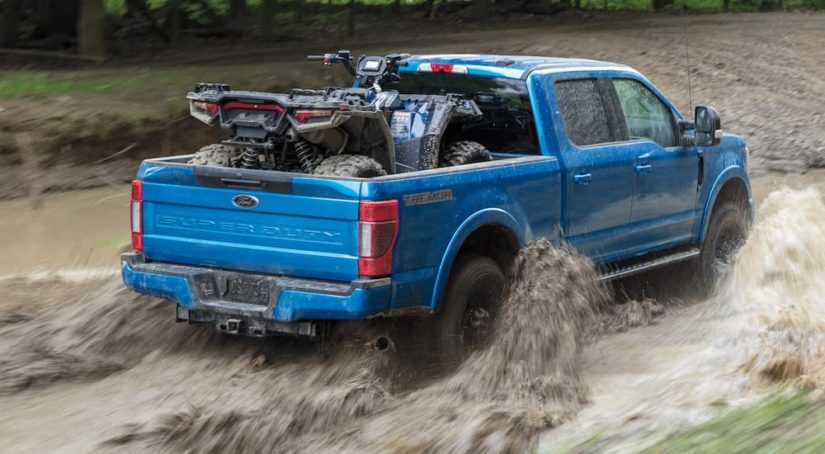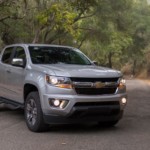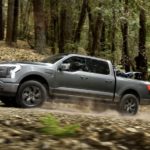If you’re planning your visit to a Ford truck dealership but are not quite sure yet which truck to buy, you can save yourself time by understanding the different vehicles before you begin shopping. Ford is one of America’s favorite truck manufacturers. They’ve been making their popular F-Series pickups since 1948. You’ve likely spotted the durable truck in movies and TV shows throughout the decades without even realizing it. And next time you’re on the road, if you pay attention, you’ll likely see quite a few out there because the F-Series are the most sold trucks in the U.S. So it wouldn’t be surprising if you were considering one of these for your next purchase.
One of the first things you’ll notice if you start researching the F-Series trucks is the different options. There’s the Ford F-150, F-250, F-350, F-450, and F-550 (but you probably won’t want that one unless you work for a company that does heavy construction and hauling). Anything above the F-350 is going to be a very heavy-duty truck and best for commercial use. But if you’re looking for a truck that is a good work truck and right for everyday life because it drives like a regular car, the F-150 or F-250 are where to look. So what exactly is the difference between these two? And which one is best for you? Let’s break them down.
Pricing Differences
You will instantly notice a major price discrepancy between these two trucks, which tells you that there are quite a few differences between the two. For example, the 2022 F-150 XL model starts at $30,870 while the 2022 F-250 XL model starts at $38,445. When you get into the upper trims, you’ll see a massive purchase price difference in these vehicles. The top trim of the F-150 goes for $76,975 starting, while the top trim of the F-250 goes for $88,880 to start. But, some would say the F-250 has a lot to offer to justify that big difference. For the purposes of this comparison, we’ll mostly look at the base level trims, but it’s worth exploring the diverse lineup of each truck. You’ll find different power, capabilities, safety, and luxury features in each.
Towing & Payload Capacity
The F-150 has a max payload of 3,325 pounds and a max towing capacity of 14,000 pounds on the regular cab eight-foot box 4×2 model. Meanwhile, the F-250 can tow up to 20,000 pounds alone and up to 22,800 pounds with a gooseneck hitch and has a max payload capacity of 4,260 pounds. That’s a substantial jump in how much the F-250 can carry and tow compared to the F-150.
If your business or job requires you to haul a lot of stuff, then paying that premium for better towing can pay off in the long run. It can mean fewer trips going back and forth between job sites and easier handling of the vehicle when it’s carrying heavy loads. It can also mean bringing a trailer or camper of your choosing along for an adventure. Consider what you will need to regularly transport, determine its weight, and then you’ll know which of these trucks is best for you.
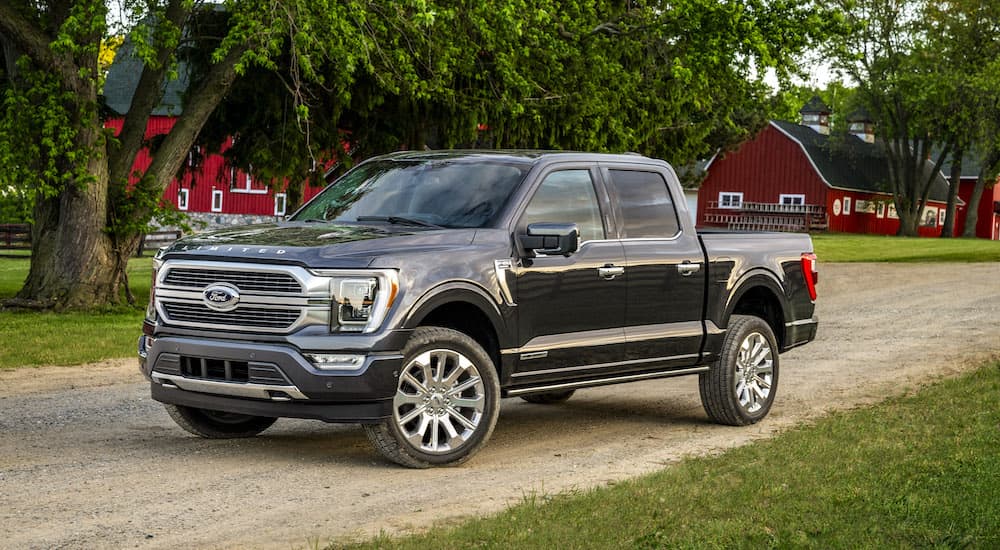
Engine Options and Performance Capabilities
Interestingly enough, it’s the smaller of the trucks here that boasts the most engine options. The F-150 has a total of six engine options. These include the 2.5L PowerBoost full hybrid V6, the 3.5L EcoBoost, and the 5.0L V8 engines. The 3.5L PowerBoost is a hybrid-electric system that has both an ion battery pack and an engine designed to reduce overall weight, creating optimal fuel economy. The EcoBoost is a twin-turbocharged V6 engine, meaning it has two turbochargers to increase air intake for better power and efficiency.
The F-250 only has three engine options, and they’re all gas reliant. These are the: 6.2L V8, the 7.3L V8, and the 6.7L Power Stroke V8 turbo diesel. These gas engines achieve higher horsepower than the engines available to the F-150. The highest horsepower found in an F-150 engine is 450 hp but the F-250 tops out at 475 hp. The F-250’s strongest engine also sees a max torque that’s over double that of the F-150, maxing out at 1,050 lb-ft.
The F-250 is meant to tow and haul more, so it needs those powerful engines. But it’s worth noting that if fuel economy is a priority to you and you don’t need to carry as much stuff, the F-150 is the way to go. And if being kind to the environment is also important, you’ll want that F-150. Ford’s F-250 simply doesn’t have a hybrid option for now. So you will need to choose between fuel economy and functionality here. Having the best of one will mean sacrificing a bit of the other.
Interior Comfort and Convenience
You might spend a lot of time inside the cab of your truck. Between cruising on highways, idling in traffic, and taking your lunch break, it kind of becomes your second home during the day. If that statement resonates with you, then we’d be remiss if we didn’t tell you to go for the F-150. It seems Ford designed this one more for the driver who needs as much functionality inside their vehicle as outside of it. That’s because it has an available interior work surface, offering a spacious place to set up your laptop or some documents and handle work. It’s also not a bad place to put your lunch or snacks during break time.
The F-150 also has the newer version of Ford’s infotainment system – the SYNC 4. The F-250 has the SYNC 3. There are some key differences that make the SYNC 4 better for those who spend a lot of time in their car. Just based on performance alone, the SYNC 4 has better graphics and faster processing speeds than the SYNC 3. The SYNC 4 also enjoys natural voice control, whereas the SYNC 3 has enhanced voice control. The former better understands a user’s natural tone of voice and rhythm for fewer misunderstandings when giving voice commands. Plus, the SYNC 4 has real-time weather and traffic updates in its navigation system, which the SYNC 3 does not.
If you rely on your truck to be your entertainment room, temporary office, and navigation system, you’ll be happier in the F-150. Put simply, the F-150 is made more with driver comfort in mind, while the F-250 is made more with hauling capacities in mind.
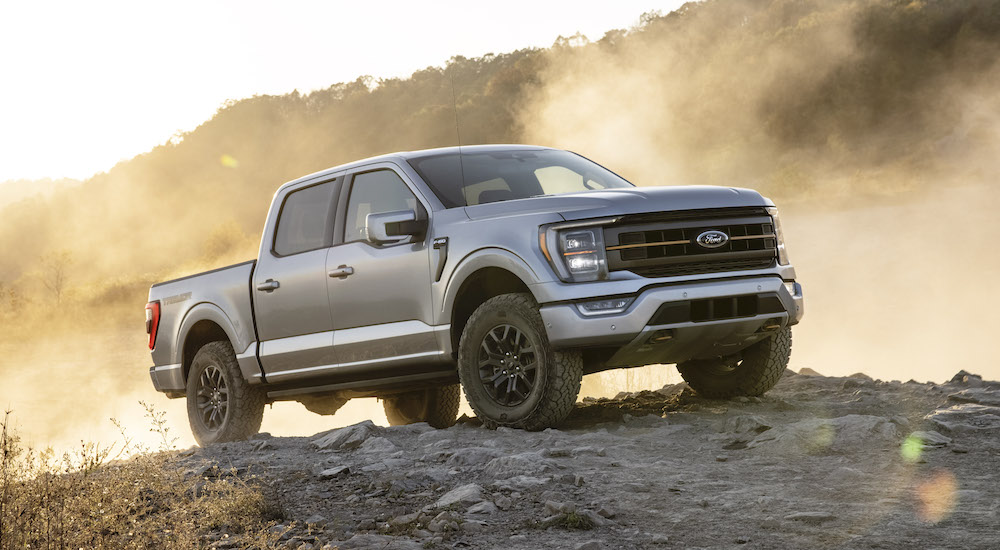
Form Over Function
You’ve probably gathered by now that the F-250 is just a workhorse, but a really good one at that. And for some people, that’s just what you need. If you want a truck that can tow your heavy campers and trailers without showing any signs of struggle and without slowing down, the F-250 has you covered. It’s truly a beast. Its torque, horsepower, and payloads far outperform those of the F-150. But, bigger isn’t better for everybody. Maybe you don’t really need to tow very heavy loads.
If you run the numbers and determine that your truck won’t work too hard, then you might prefer the F-150. And this is especially true if you plan on treating your truck like your everyday car. The F-150 will be easier to maneuver, take turns better and get into parking spots with less struggle than the F-250. With its hybrid powertrain options, it will also achieve far superior fuel economy to the F-250, so if mileage matters to you, there’s a clear winner here.
However, there’s no true “winner” here––it’s just about assessing your needs. Hopefully, we provided enough information about the key differences between these truck models to help you make a decision about which one will actually be the better fit for you.
